Lessons in lifting help kids step toward fitness
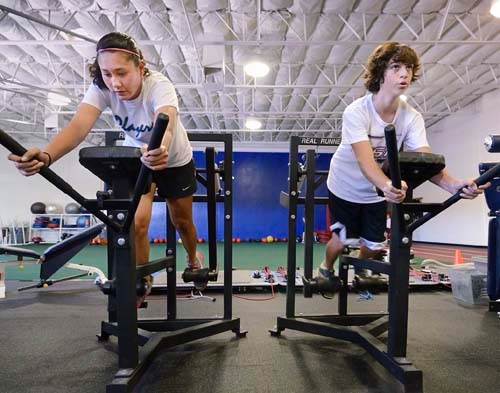

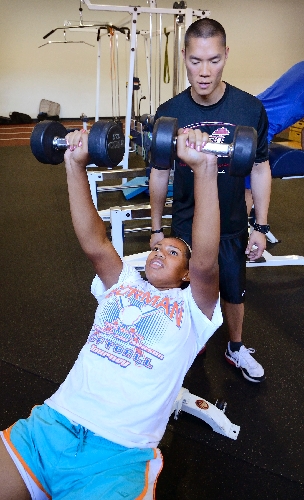
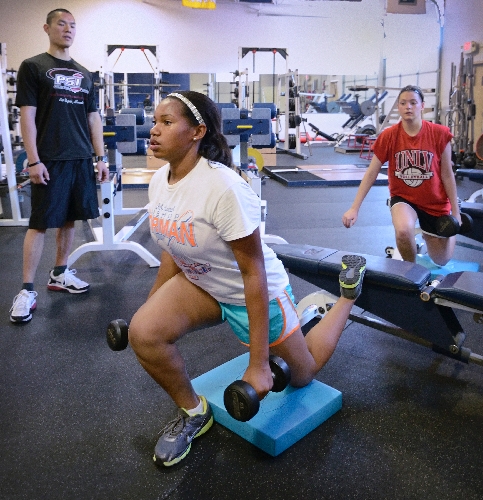
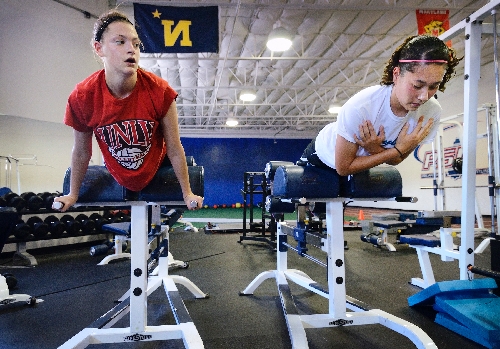
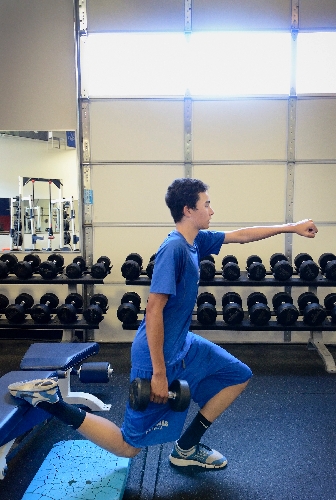
Marcus Niemo splays himself on the floor, arms outstretched, looking like a muscular letter T.
“It’s the simple things,” says the owner of the Body Fit Vegas gym as he moves his arms in, swings his torso up and touches his toes in one smooth, uninterrupted motion.
Niemo is speaking about developing a weight training and physical fitness routine for kids, with whom he frequently works, while demonstrating some exercise moves on a recent Thursday afternoon.
For Niemo, it begins with fundamentals, hence the basic movements he engages in: squats, sit-ups, some standard yoga poses.
“It’s flexibility, conditioning, balance, coordination,” says the longtime trainer, who’s been doing this for 20 years and has the brick-hard build to show for it. “That comes from muscle development, teaching the body to do certain movements.”
The benefits of youth weight training are well-established: improved health, increased stamina, heightened focus.
But when and how should kids start?
“In past years the industry standard was 13 years old,” says Mike Waters, president of Phase 1 Sports, a multipurpose gym and training center. “Now, there are studies that support kids starting weight training programs as early as 7 or 8 years old. The first step would be to determine the child’s maturity level, overall coordination and health. Once these evaluations are done, that can be a good time to begin a base strength training program.”
Before kids begin lifting weights, trainers recommend that they initially focus on exercises that enable them to establish muscle control and coordination, like those that Niemo performed.
“It’s all about proper technique,” Niemo says, before using an automobile metaphor to illustrate his point. “If you go and get your tires changed and the mechanic is rushing because it’s Friday night and he puts four out of five lug nuts on a tire, will the car drive? Yes it will. But because of the sloppy technique, damage will happen down the road.”
Developing good technique, then, is the first step and starts with high reps of basic movements.
“Young kids need higher volume, less intense workouts to develop their movement patterns and their nervous systems to efficiency before they get into even trying to lift heavy weights,” says Mark Philippi, founder of athletic training facility Philippi Sports Institute and a former strength coach at the University of Nevada, Las Vegas who won the “America Strongest Man” title in 1997.
When it’s time to get into strength training, a good way to begin is with exercises that incorporate a kid’s own weight, such as pullups and pushups, before moving on to things such as barbells and dumbbells.
“They’ve got to control their own body weight first before we throw any kind of external resistance on them,” Philippi says.
This is key to preventing injury.
“Oftentimes, people jump into using external loads before they know how to use their own biomechanics, so people end up getting strong outside of their proper range of motion,” says Branden Collinsworth, a sports performance coach and co-owner of Real Results Fitness gym. “That happens at a young age. Then the next thing you know, three years later, these kids are getting lower back problems or MCL (medial collateral ligament) injuries, and that usually comes form improper form.”
As such, kid weight training routines need to be assessed differently than those of adults, who often focus on piling on as much muscle gain as possible.
“Most adults tend to track progress by increases in the amount of weight, intensity level and overall physique changes,” Waters notes. “So adult programs usually include powerlifting, heavy weight training, high intensity interval training, etc. These all can be extremely dangerous for children.
“The goal is to build a weight training base that will prepare them for more advanced training as they get older,” he adds. “If done properly, a child will have noticeable results training this way, but should not have a high concern with building muscle mass.”
Back at Body Fit, Niemo expands upon the value of physical training for kids, standing beneath an inscription on the wall that reads “No whining” in large red letters.
“You feel good about yourself,” he says. “Exercise, properly challenging them, is limitless for their minds and bodies.”
Contact reporter Jason Bracelin at
jbracelin@reviewjournal.com or 702-383-0476.












